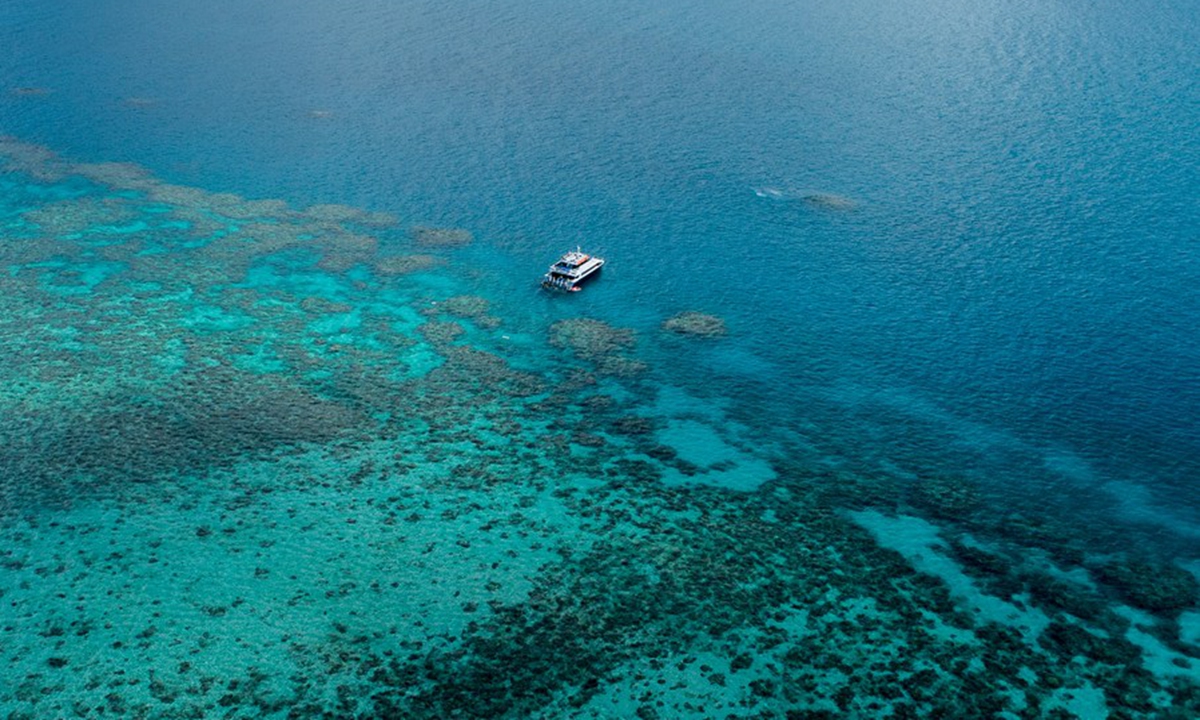Summer heat wave bleaches 91% of Great Barrier Reef coral

Aerial photo taken on June 2, 2021 shows the Great Barrier Reef in Queensland, Australia. The Great Barrier Reef, the world's largest coral reef in Australia's state of Queensland, is described as the "planet's most beautiful marine environment" and is the main conservation target of the Citizens of the Great Barrier Reef, a charity cooperative organization that runs a series of preserving programs. (Photo by Hu Jingchen/Xinhua)
A prolonged summer heat wave in Australia left 91 percent of the Great Barrier Reef's coral damaged by bleaching, according to a new government monitoring report.It was the first time on record the reef had suffered bleaching during a La Nina weather cycle, when cooler temperatures would normally be expected.
The Reef Snapshot report offered new details of the damage caused by the fourth "mass bleaching" the world's largest coral reef system has experienced since 2016, which was first revealed in March.
The Great Barrier Reef Marine Park Authority, which published the report late on Tuesday, conducted extensive surveys of the World Heritage-listed reef between September 2021 and March 2022.
It found that after waters began to warm in December 2021, all three major regions of the reef experienced bleaching - a phenomenon that occurs when coral is stressed and expels brightly colored algae living in it.
Although bleached corals are still alive, and moderately affected sections of the reef may recover, "severely bleached corals have higher mortality rates," the report said.
Of the 719 reefs surveyed, the report said 654 - or 91 percent - showed some level of coral bleaching.
The report was published 10 days before Australia's May 21 federal election, in which climate change policy has emerged as a key issue for voters.
Australia's 2019-20 "Black Summer" bushfires and deadly east coast floods that swept away cars and engulfed homes in 2022 have highlighted the country's growing climate risks.
AFP

